My husband had been itching to go to the Lake District for the past couple of years, as he is doing some research for a book he is writing about the lives of a couple of men who lived in the town of Kendal in Westmorland in the late 1700’s.
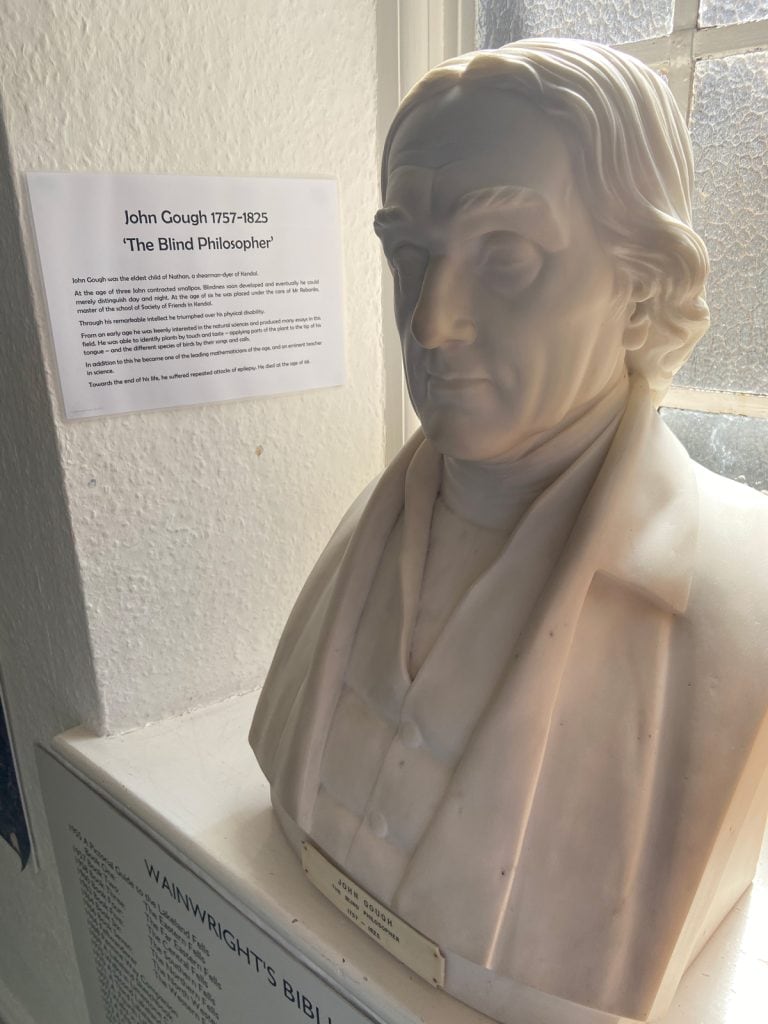
These were John Gough, who was known as the ‘Blind Philosopher’, and one of his students who rose to greatness, John Dalton. Dalton was the man who indirectly proved the existence of the atom. Rob’s interest is mainly in the blind John Gough and his influence on his student.
Kendal, gateway to the Lake District
Kendal is about 1 ½ hours from Manchester by car and is considered the gateway to the Lake District.
Kendal’s old town has slate built buildings giving it a distinct look. It’s situated around the river Kent and a small mountain (‘Fell’) on the river’s west side. There are several old scenic bridges that cross the river, and the town now extends on both sides.
We stayed in an older slate-built home in walking distance to most everything.
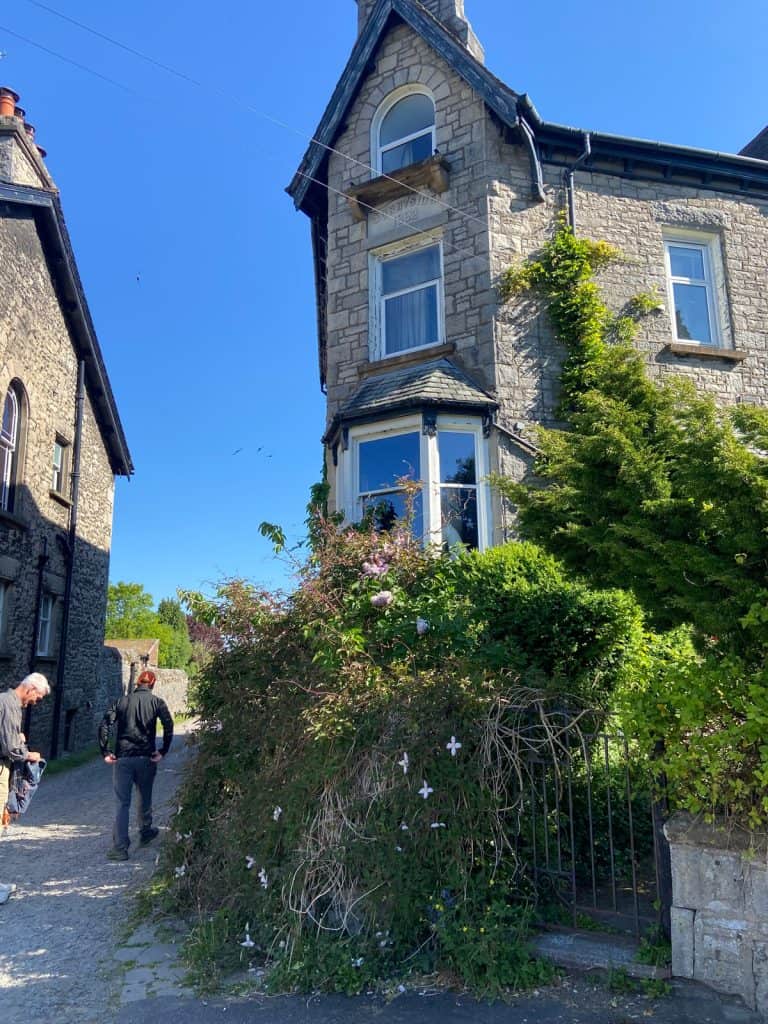
There is a crumbling castle that once belonged to the the Barons of Kendal who held a vast estate for over 500 years. The ruins stand high up on the windy east side of the fell and belonged to the family of Katherine Parr, one of Henry VIII’s wives; that castle goes back to the earliest Norman times.
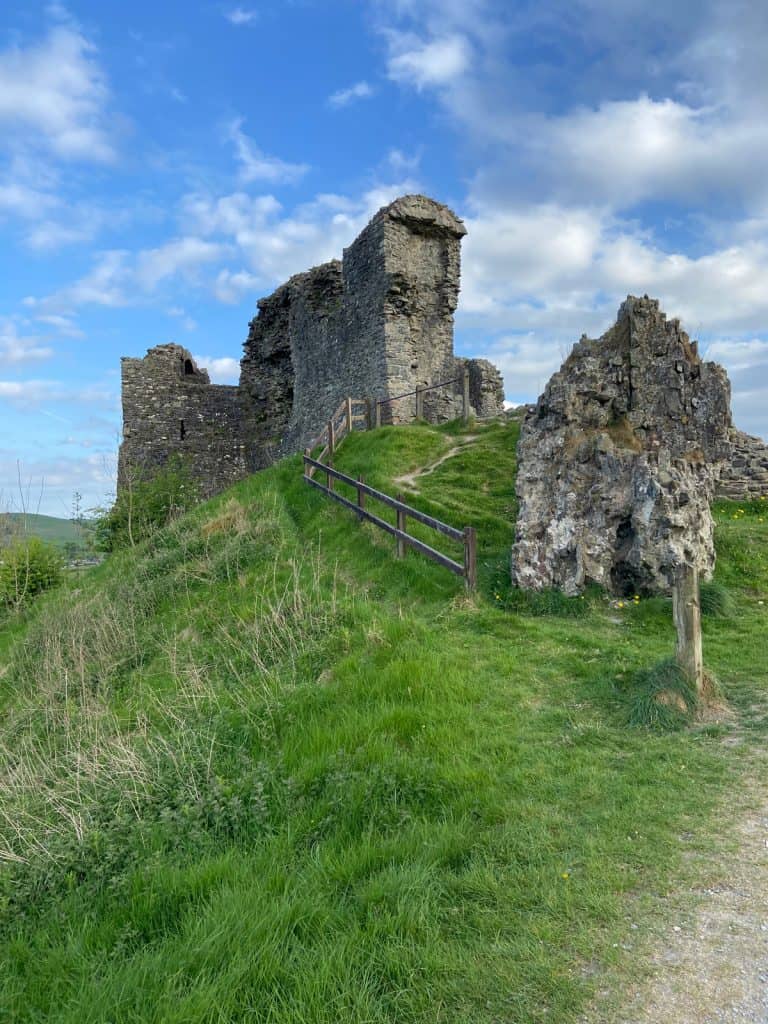
Our lodgings were a short, albeit a very steep walk to the castle. Lying in bed at night at the foot of the castle’s hill I could imagine the gatherings that must have taken place nightly in the great hall just a short distance away. Perhaps on moonlit nights the ghosts of the Parr clan feasted on.
There is also a hill on the west side of the river where the Saxons, Pre-Normans, had their motte-and-bailey fortress.
Just south of Kendal there was a Roman garrison, called Congangium. In Pre-Roman times, there was settlement here too, comprised of Cumbrian Celts. Before that, the earliest homo sapiens displaced the Neanderthals. So the place is very, very old.
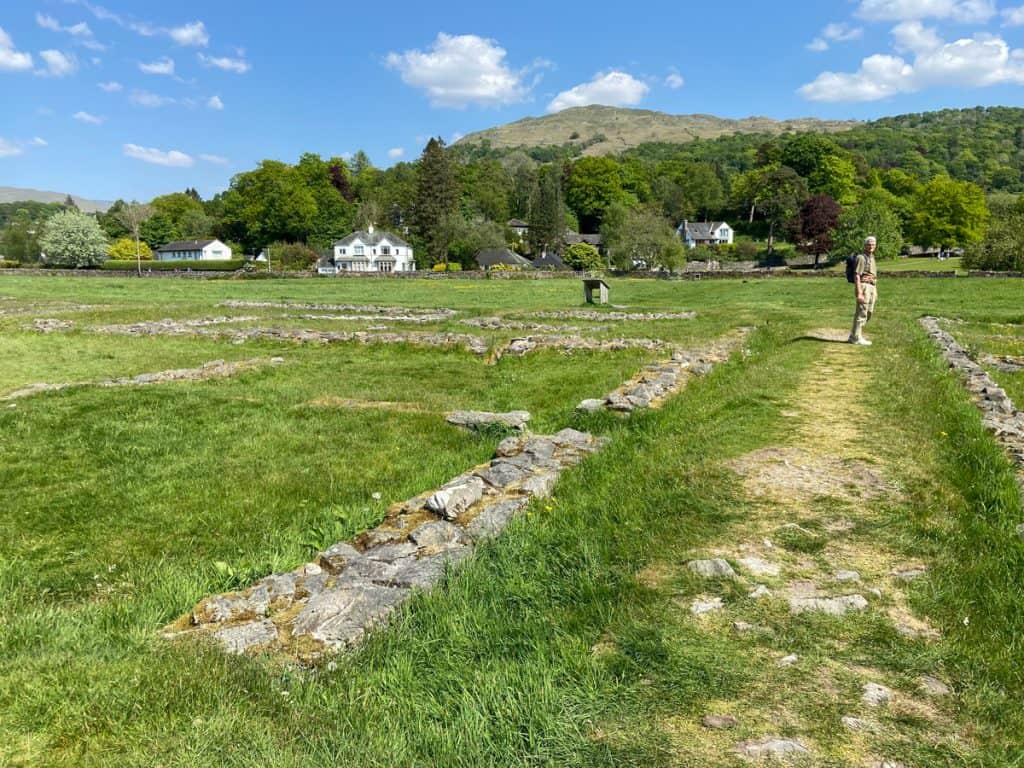
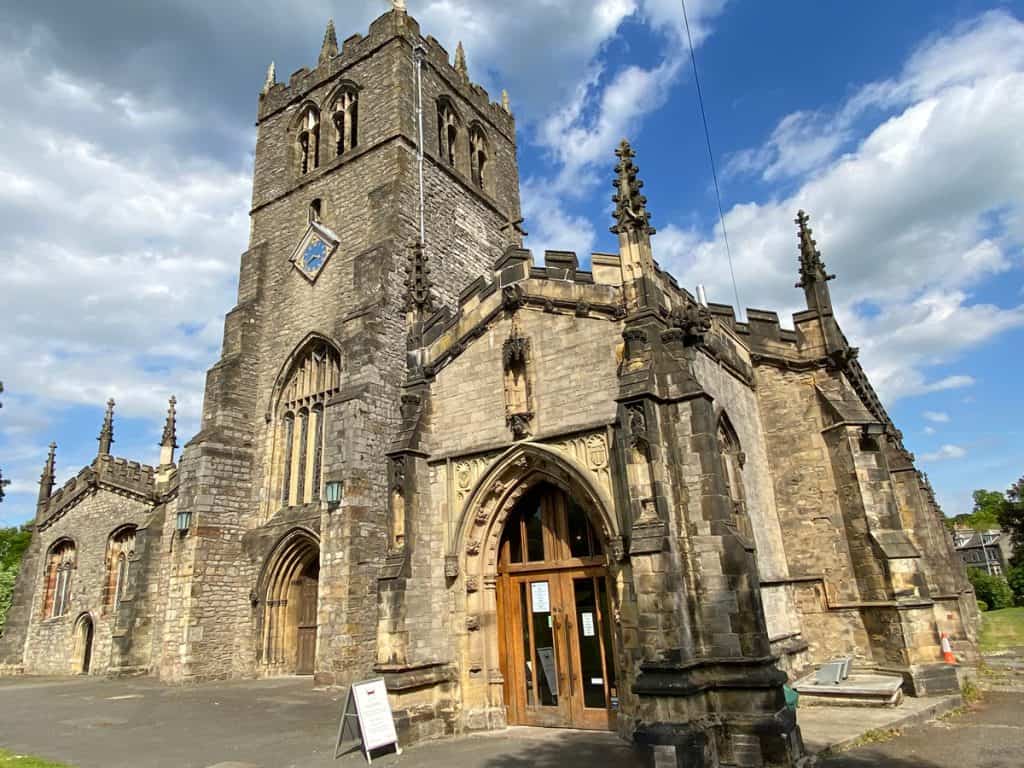
First thing we did upon arrival was visit John Gough’s grave in the nearby Anglican churchyard. Then we explored the castle ruins.
Our plan was to climb Blencathra (also called Saddleback) a mountain to the northeast of the Lake District, about a 40 minute drive away, and we had to decide: do we work up to that walk by doing a smaller peak first, or do we just go on the first day of good weather we have? We decided to go as soon as it wasn’t raining. It turns out we had nearly perfect weather while we were there. So we drove up there the second day.
The reason Rob wanted to climb this particular mountain was that he had read the account of Gough’s ascent. Imagine a blind man climbing a mountain! He, like us, went up from Mungrisdale, a tiny rural hamlet, where Gough spent about 6 months while he was being tutored in mathematics (which he mastered). Gough went up in the company of two friends (one of which was lame) and 2-3 local guides. The blind man and the lame man were the first to the peak. They did not stop there, but descended that mountain, walked to another high peak, Skiddaw, and climbed it as well. On the way back they debated whether they should climb Blencathra on the return journey as well. The company split up, and the lame man went up Blencathra with 2 others spending the night on the mountain, while John Gough the blind man, came down to spend the night near Keswick, the closest town. We were just going to climb Blencathra that day. It seemed like enough for 4 sighted Canadians ascending their very first mountain.
Question: Why does a blind man go up a mountain? Certainly not for the view…
Up the mountain
Blencathra is 868 meters high (close to 3,000 feet), which places it in the top twenty highest mountains in England. The beginning of the climb from Mungrisdale is very steep, we basically followed a sheep path up a slip-sliding 30 to 45 degree slope to ascend to Bowscale peak before climbing Blencathra.

There were vertigo causing drops as well as steep zig-zags ‘paths’ with treacherous shifting shale underfoot. After about a 5 hour climb we reached the summit and the views were breathtaking. Not that I had much breath left! We were on top of the Lake District – truly a moment to remember.
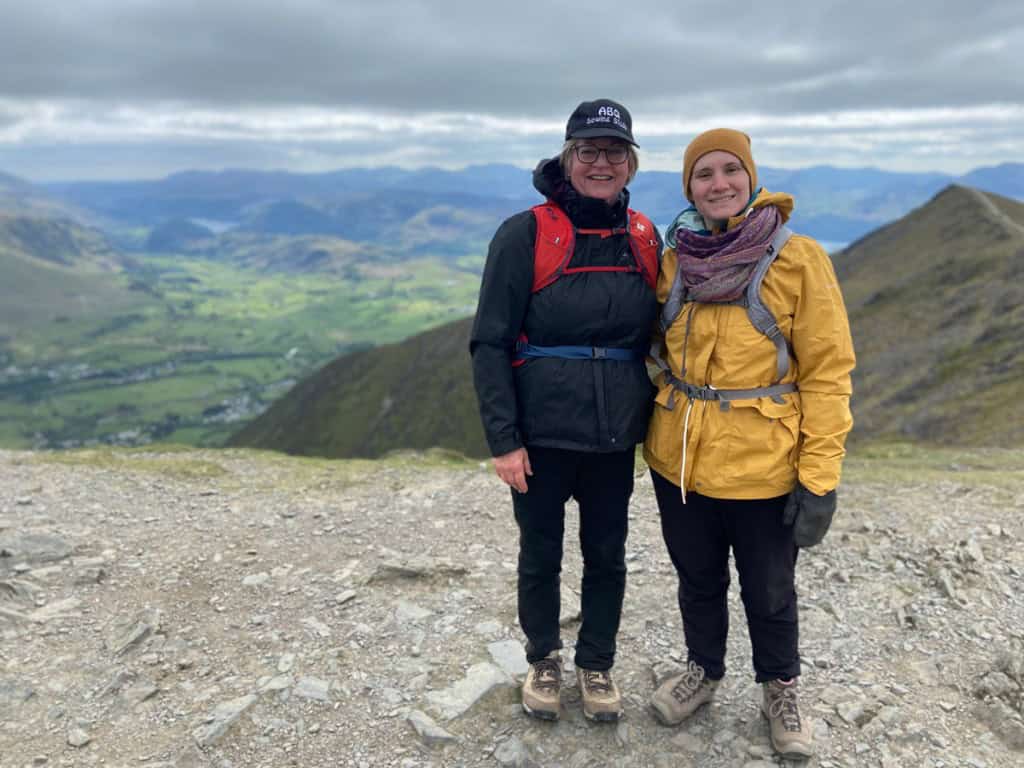

The descent was equally trying and after 8 hours of treking we made it back to our rental car and drove into Keswick for a much needed meal.
Other area attractions
My knees were a bit wobbly for a couple of days after that excursion but considering that last spring I was on crutches for my poor left knee, I was quite proud of myself. My daily routine physio exercise had paid off in spades. However, the most I was fit for the next day was a bit of slow walking doing sightseeing in Kendal.
The Kendal Museum had a bust of John Gough that Rob needed to see, along with other scientific journals and devices used by Gough and Dalton.
Then it was off to the nearby Quaker Textile Museum. Dalton taught at the Quaker School here. Gough did not stay with the Quaker faith and was eventually shunned by the Quakers when he made a decision to marry a gal who was Anglican. Kind of romantic, I think.
The Quaker Textile Museum houses a multi panel tapestry rather like the Bayeux Tapestry. The tapestry tells the story of Quakers in 77 panels covering over 350 years of their history. Forty of these outstandingly beautiful panels were on display and I include a picture of the one done by Canadian Quakers.

Quakers from around the world of all ages completed the hand embroidered panels. Classes are also taught there to learn embroidery. Leah and I both purchased a kit to try out crewel embroidery stitchery with wool. There was also a wonderful vegan cafe on-site and we twice enjoyed meals there – a full English breakfast and a delicious lunch. I can highly recommend this cafe.
Yarn shops and cool crafts
Leah is a knitter, so while Rob and Paul climbed a local fell the two of us went on a walking tour of some other Kendal sites: the Unitarian church frequented by Gough, some of the famous yards, and a couple of shops that carried yarn. I bought a ball of yarn from a delightful little shop so Leah could teach me the proper way to knit. I can knit but my tension has always been a bit sketchy. Leah worked on a pair of socks in the evening while I practiced like a good student.

Both of us are crafty and we located another local craft shop, Cool Crafting where they carry yarn, fashion fabrics and quilting fabrics. The owner is known for her patterns and kits that create charming critters in fancy dress, Beatrix Potter style.
Lakes, topiaries and a mock castle
Together, the four of us spent a day taking several boat trips from one end of Windermere (Lake) to the other. It is about 11 miles long.
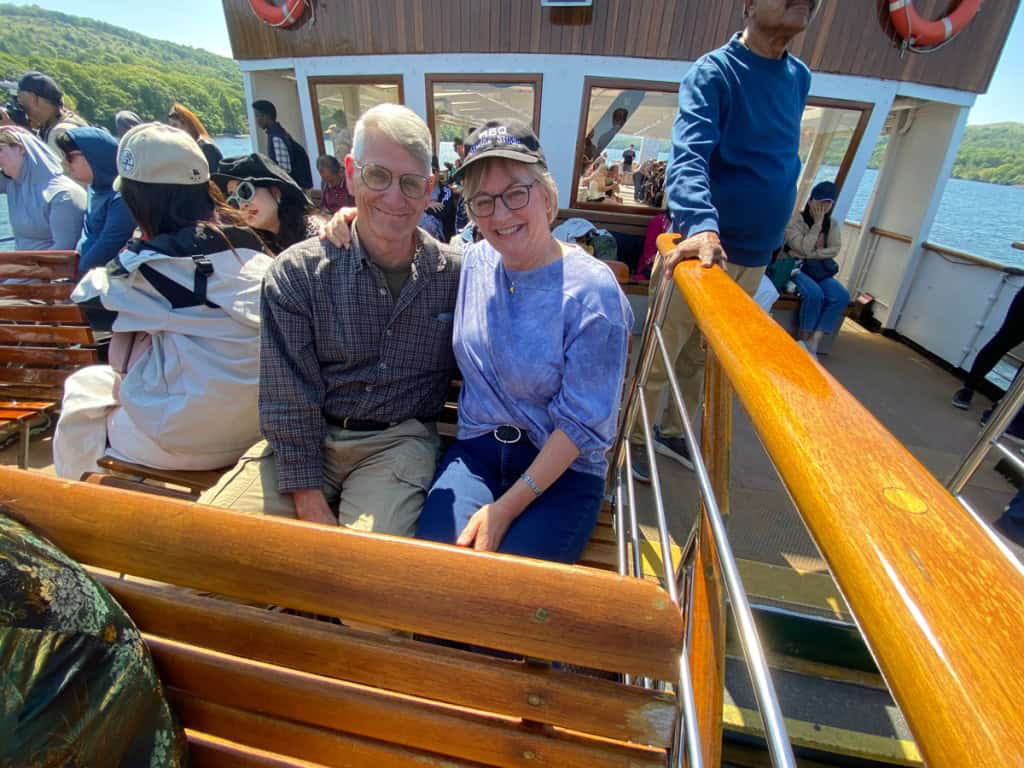
At the northwestern end is a place called Castle Wray. It’s a mock castle built in the 1800’s by a wealthy Manchesterite. This is in the vicinity of where John Gough’s grandfather on his mother’s side had a cottage, a place he visited as a boy.
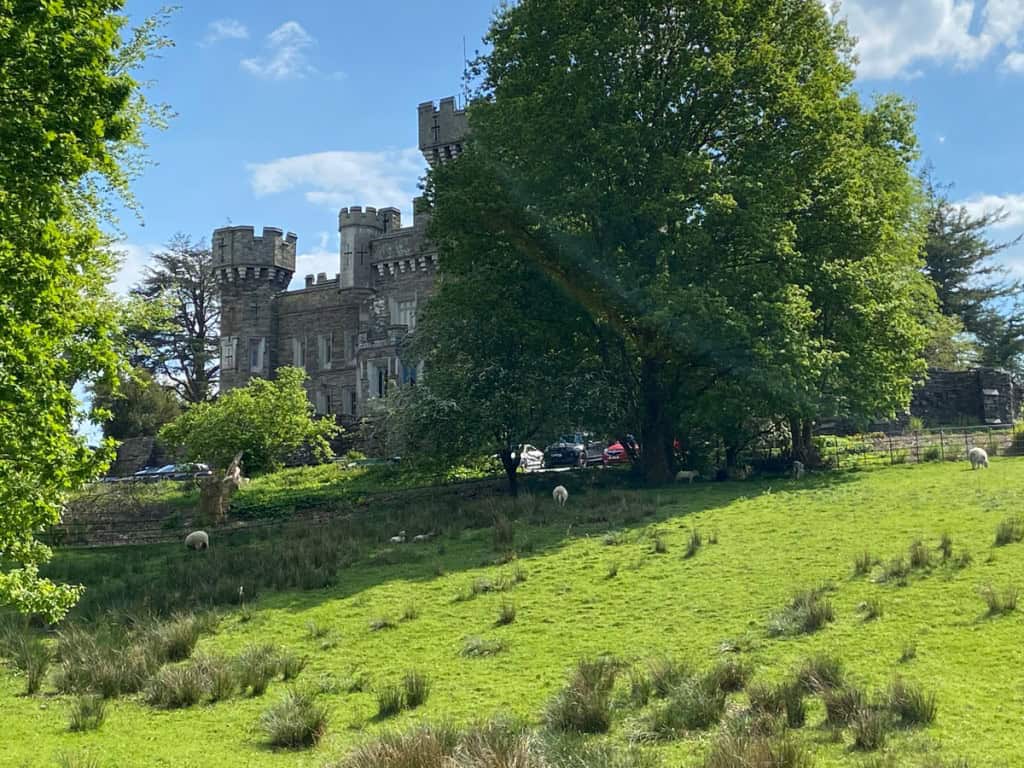
If you ever get a chance to watch the movie about Beatrix Potter starring Renee Zellweger, you will see these places that she visited as a young girl. The views from Wray Castle are idyllic, sheep grazing on hilly pastures, impressive ancient trees, the lake, a spectacular view of the mountains and lots dry stone walls.
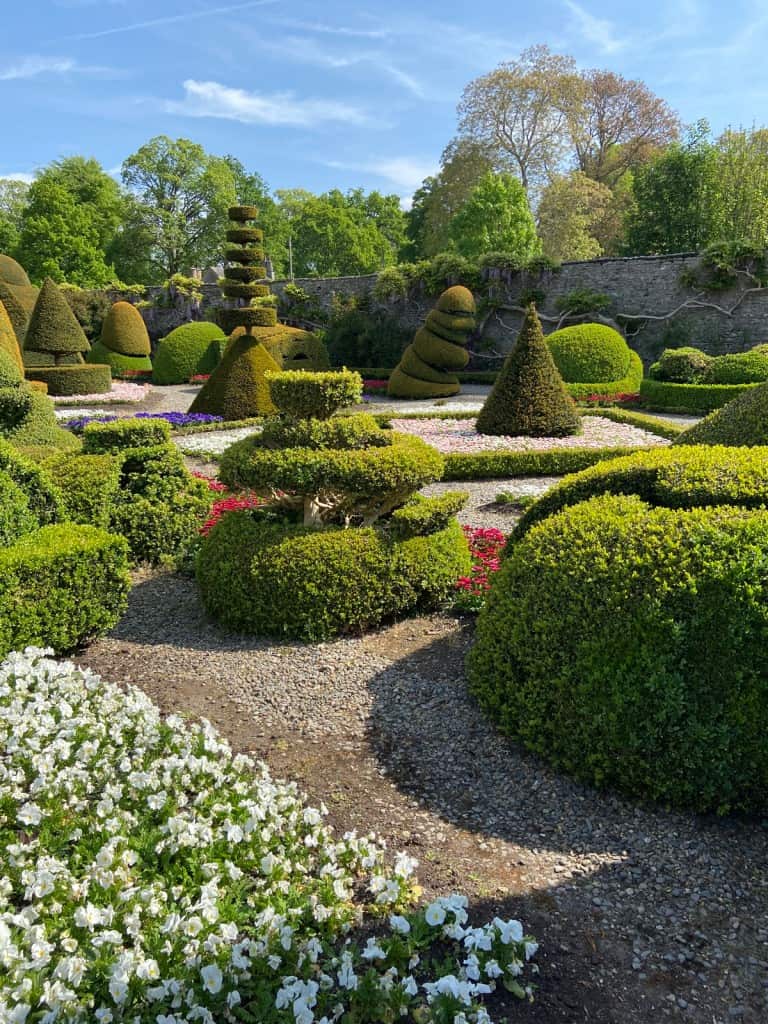
We also visited Levens Hall. It just happened to be National Topiary Day and the head gardener led us on a tour of the topiary garden and explained how it was created and maintained. Levens Hall is the site of the world’s oldest topiary gardens. There was a brass band playing in the gardens and it was the perfect day for wandering around outdoors and enjoying a picnic.
The house was also open for viewing and was everything one might expect from an old estate – gorgeous furnishings, tapestries, intricately carved woodwork and more. They even had England’s oldest quilt on display. The room it was kept in was so dim the image I took does not give much detail.
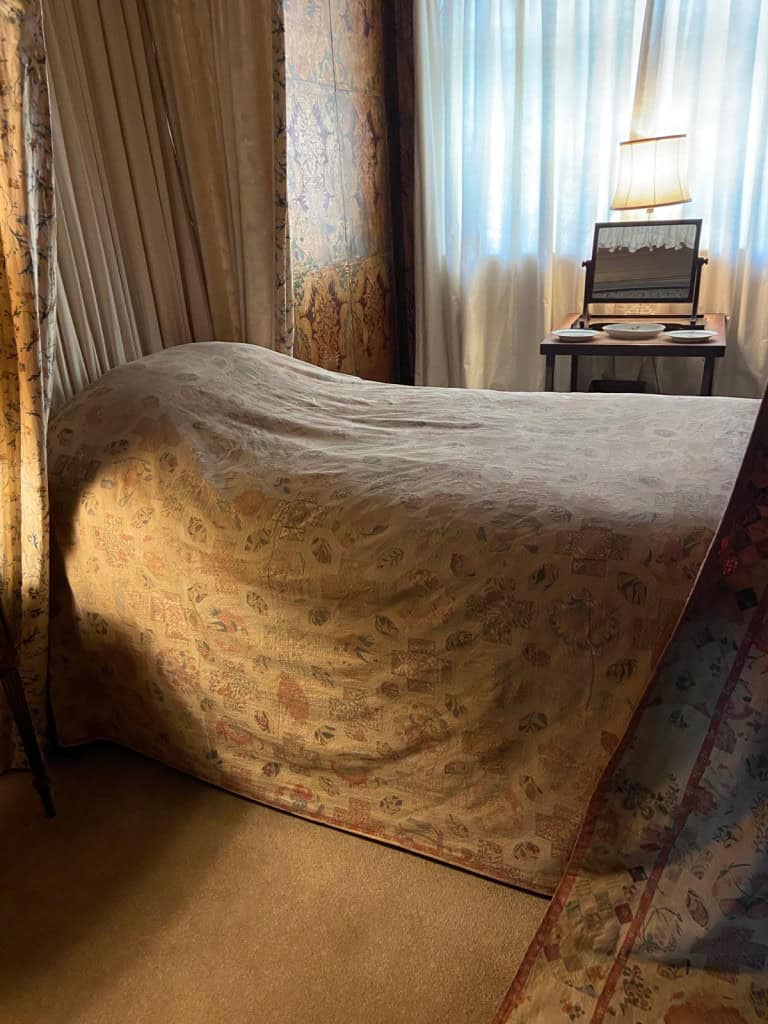
More mountains and lakes
The boys, feeling fighting fit again, decided to spend their last day in an attempt to climb another peak -Helvellyn, but they had a change of heart at the last part of the climb. You have to scramble up a very narrow arête, and Paul was experiencing vertigo. Of course, every year some people die here (as they do on Blencathra), so they were being extra careful. Instead, they settled on climbing another peak as part of that range, called Catstye Cam (890 m). Just after they got to the top, an older pair of gentlemen arrived, and out of breath, one said that with the ascent of this peak, he had completed all the Wainwrights in one of the seven guide books that Wainwright had written. Wainwright was a local gent, a bit of a loner and curmudgeon, who ascended all the peaks in the area on his weekends away from work and produced a set of impressive hand illustrated guide books for climbers. He is much revered for his work. We met quite a few people who had done the majority of the many peaks in the area.
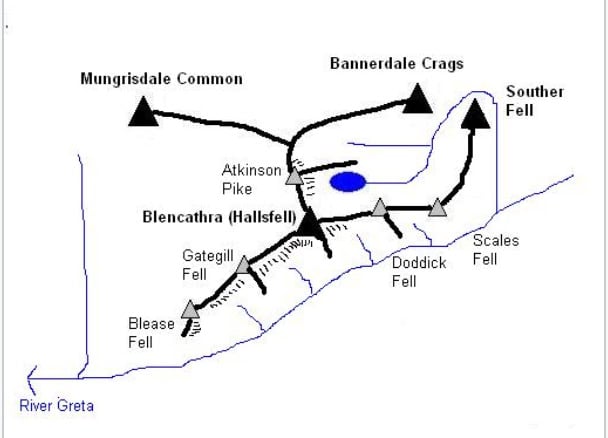
The shops sell this interesting map of the peaks where you can scratch out the name of the peaks you have climbed to keep track of your progress! Being a bit older and wobbly in the knees, I decided this souvenir would not likely get used too much by me. I bought a Blencarthra themed mug and a patch for my backpack instead.
While the guys were climbing, Leah and I were taking it easy on a multi-lake sightseeing minibus tour. Our guide Jane had also climbed all the “Wainwrights” but now had hip and knee replacements. Goes to show you it might be better to take it a bit easy perhaps? We really enjoyed her tour taking in Grasmere, poet William Wordsworths grave, and nibbling tasty gingerbread at a nearby shop.

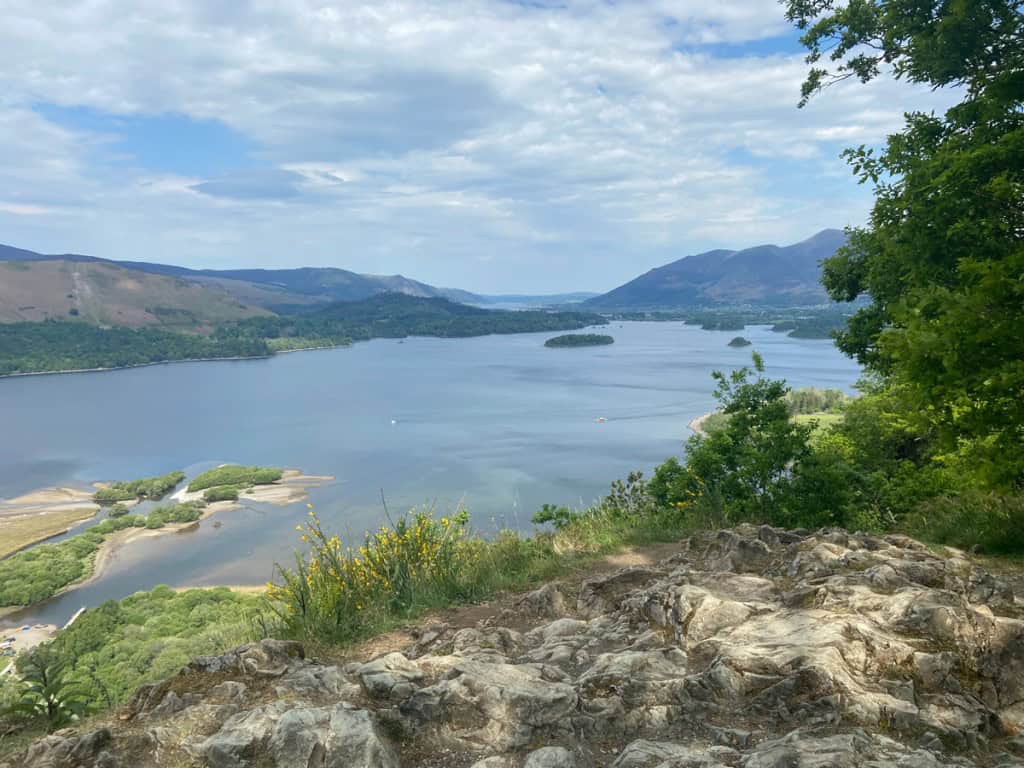
The Surprise View we visited takes it’s name from the lack of a barrier at the cliff edge. The surprise comes when you take one more step thinking there will be more ground underfoot. There’s not.
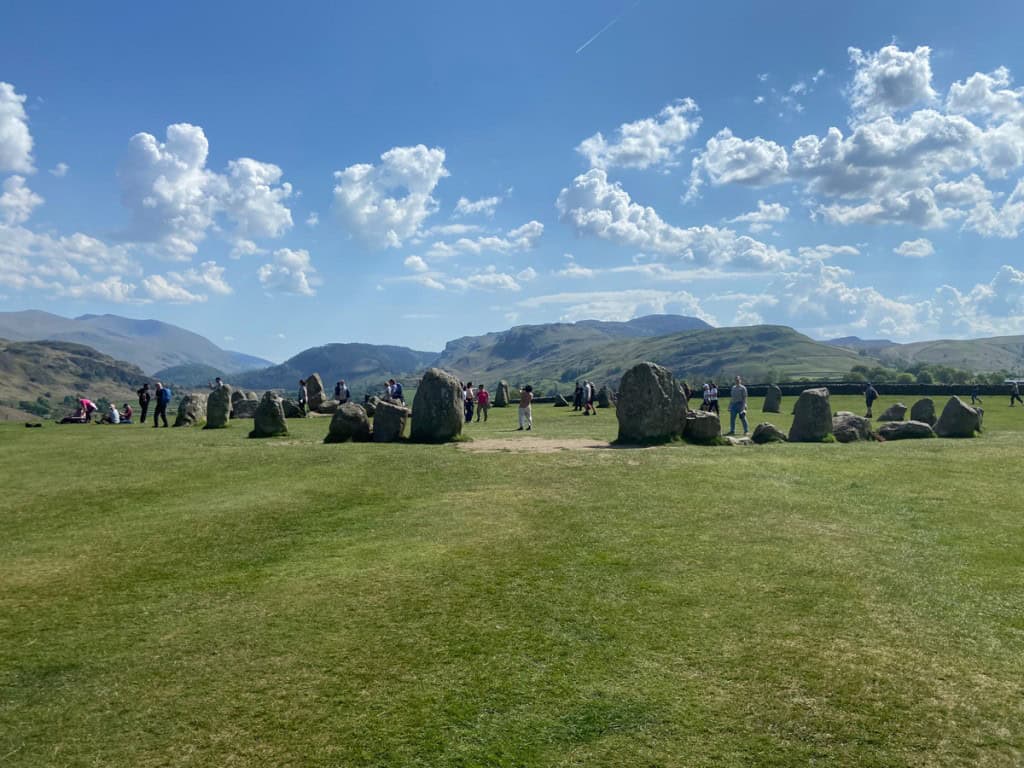
With a multitude of lakes to view along with the impressive stone circle at Castle Rigg it was a great way to wrap up our vacation. Rob tells me he will likely need to return again, this time to the archives in London. Can’t say I mind that idea at all….
Looks like you all had a great time!
Hi Rollande. We sure did. It was such a pleasure to have both Paul and Leah with us and we so appreciated Carmen and Peter watching the kids. They are both gems.
I’ll never get to England, so I’ll live vicariously through your visit. Thanks for the travelogue – it looks / sounds like you visited a lot of places that I would have enjoyed!
Yes, it was a very nice trip. The weather was lovely too but they were hoping for rain there as it had not rained in 7 weeks.